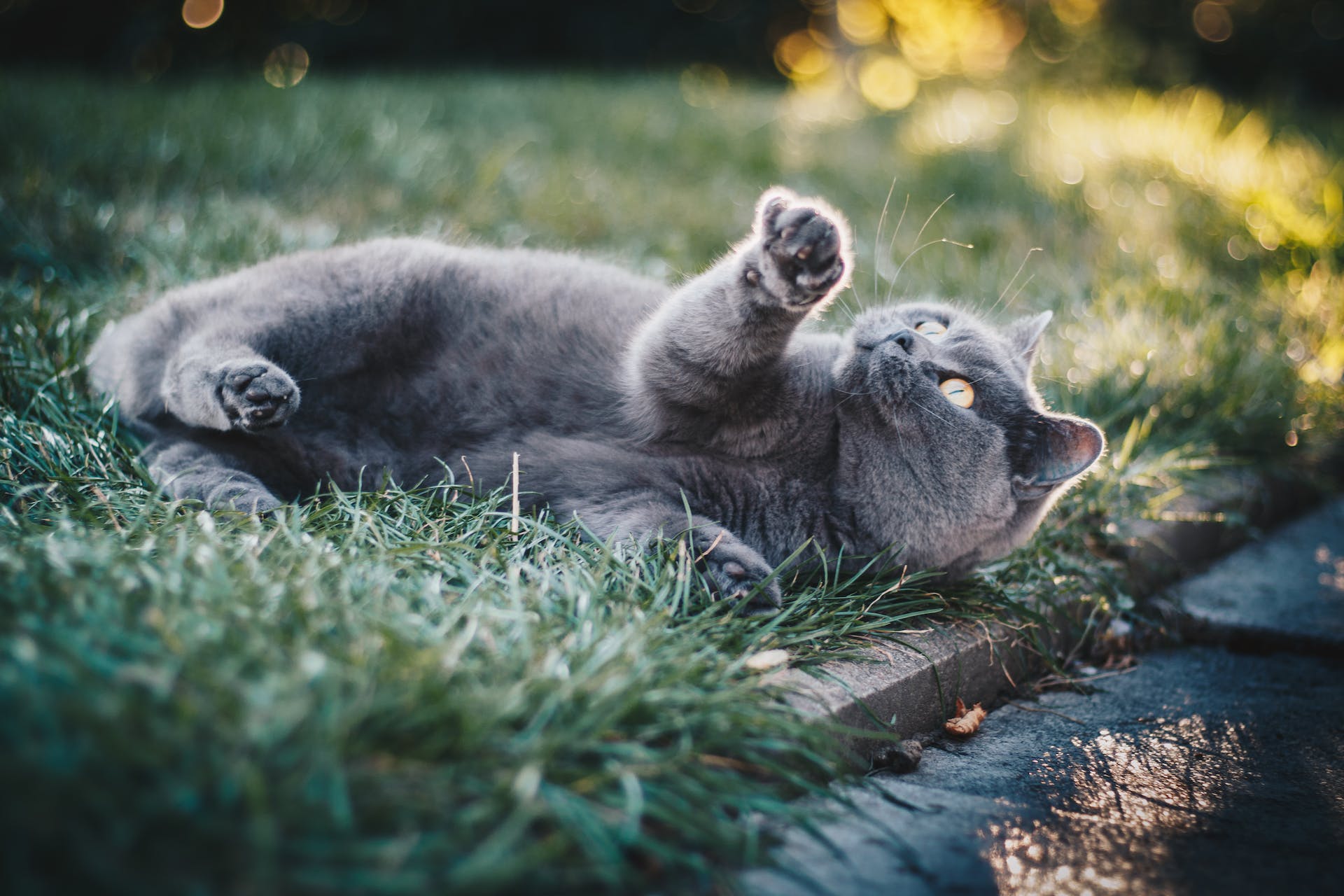Cats have a graceful charm that has captivated humans for centuries. As our companions, these furry felines continue to intrigue us with their unique behaviors and mysterious ways. In this article, we will explore the top 10 secrets of our feline friends to find out surprising facts that make them so lovable.
- How do cats communicate with humans?
- What do cats meow about?
- What does tail language tells about your cat?
- Does purring heal humans?
- Why did Ancient Egyptians value cats?
- Why do cats sleep so long?
- Are whiskers important for cats?
- How do cats sweat?
- How to know if your cat loves you?
- Why do cats need claws?
1. How to communicate with your cat?
Cats use mostly nonverbal cues to communicate to other cats. Studies have shown that cats are more likely to meow often around their humans. To understand your cat, you need to make your cat feel safe. They are scared of sudden moves and noises, so in order to make your cat less afraid of you, you should be considerate around your cat. Use slow movements when approaching your cat and feel free to meow back. This is how to cat:
- Slow blink your cat
- Use slow movements when approaching
- Meow back when they talk to you
- Pet the cat when they approach you
When you walk up to your cat, show that you are not a threat. Do not hit your cat or make sudden noises. You can show your cat you like them by slow blinking at your cat. Cats use this method to communicate to each other when they are relaxed. If you know how to make your cat feel safe, they will be less shy around you or may even sit on your lap.
2. What do cats meow about?
Did you know that your cat’s meows may have different accents? Cats meow at their human to get the most of their attention. Kittens meow to get their mother’s attention but that trait stays with them when they grow around a human. Studies suggest that cats modify their vocalizations to communicate with their human companions. Here are some of them:
- Chirps of excitement or food anticipation
- Longer meows for attention
- Yowls when the cat is in heat
- Yows/howls when a cat REALLY doesn’t like something
- Meows when the cat is afraid
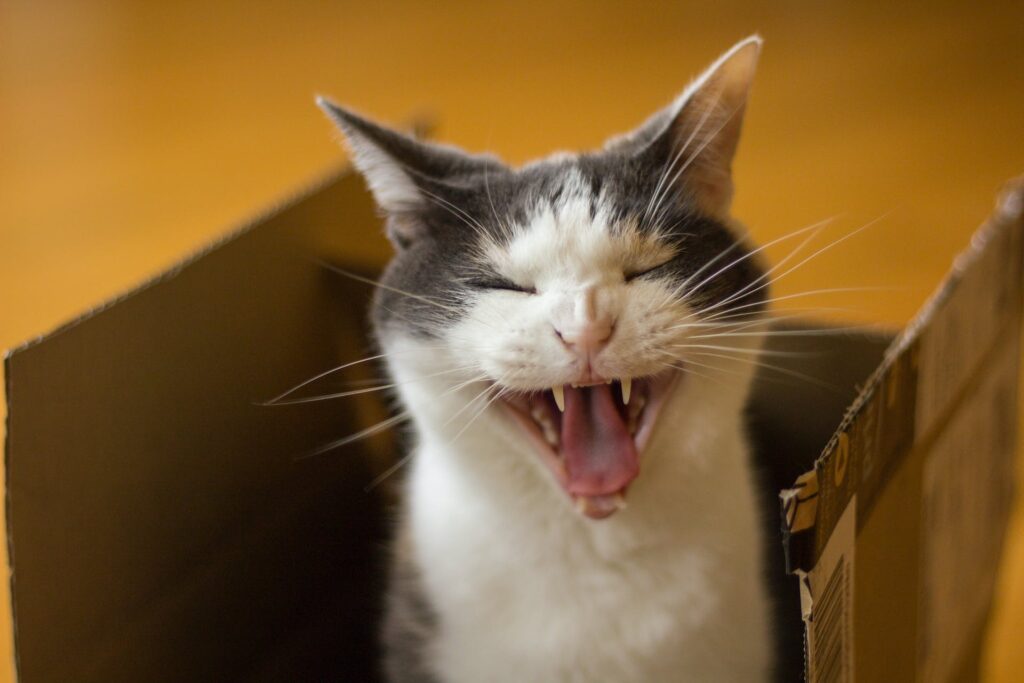
Each cat develops a unique “language” to interact with you effectively. Depending on what they want from you. A happy chirp when they see a bird sounds different than when the cat meows because a human dared to lift up the fluffy princess. When you can differentiate between your cat’s meows, you can guess what they want from you much sooner. Leading to a happy cat!
3. Tail Tales: What does your cat’s tail say about its mood?
A cat’s tail is a fascinating mood barometer. And the most misunderstood one. A tail swinging displayed by a cat can mean a lot of things. It can show anger and curiosity and sometimes even friendliness. Depending on what other signs there are next to it. Here is a list of what your cat’s tail can tell you:
- Raised tail – friendliness
- Raised tail swinging slowly – friendliness
- Lowered tail swinging fast – cautiousness, fear, annoyance
- Puffed up tail – fear, aggression, overstimulation
- Tail moves only slightly – calmness
If your cat approaches you swinging its raised tail while rubbing on your legs – it’s definitely being friendly. If the tail is raised and puffed up it can mean fear, aggression or overstimulation. If you are petting your cat and it starts to swing its tail side to side, it’s like getting annoyed and might bite you soon. Pay extra attention to your cat’s tail and ears to decode your cat’s emotions. If you can understand your cat’s communication signs, you can ensure to have a good relationship with your pet.
4. Whiskers GPS: Are whiskers important for cats?
Humans might have been more graceful creatures if we had been blessed by the whiskers. Also known as vibrassae, whiskers for cats are more than just funny accessories – they serve as a cat’s navigational tool and many other things. Some of these cool features include:
- Navigating through space
- Very sensitive antennas
- Cat to cat communication
- Hunting tool for detection
- Balance and orientation
- Reflection of overall health
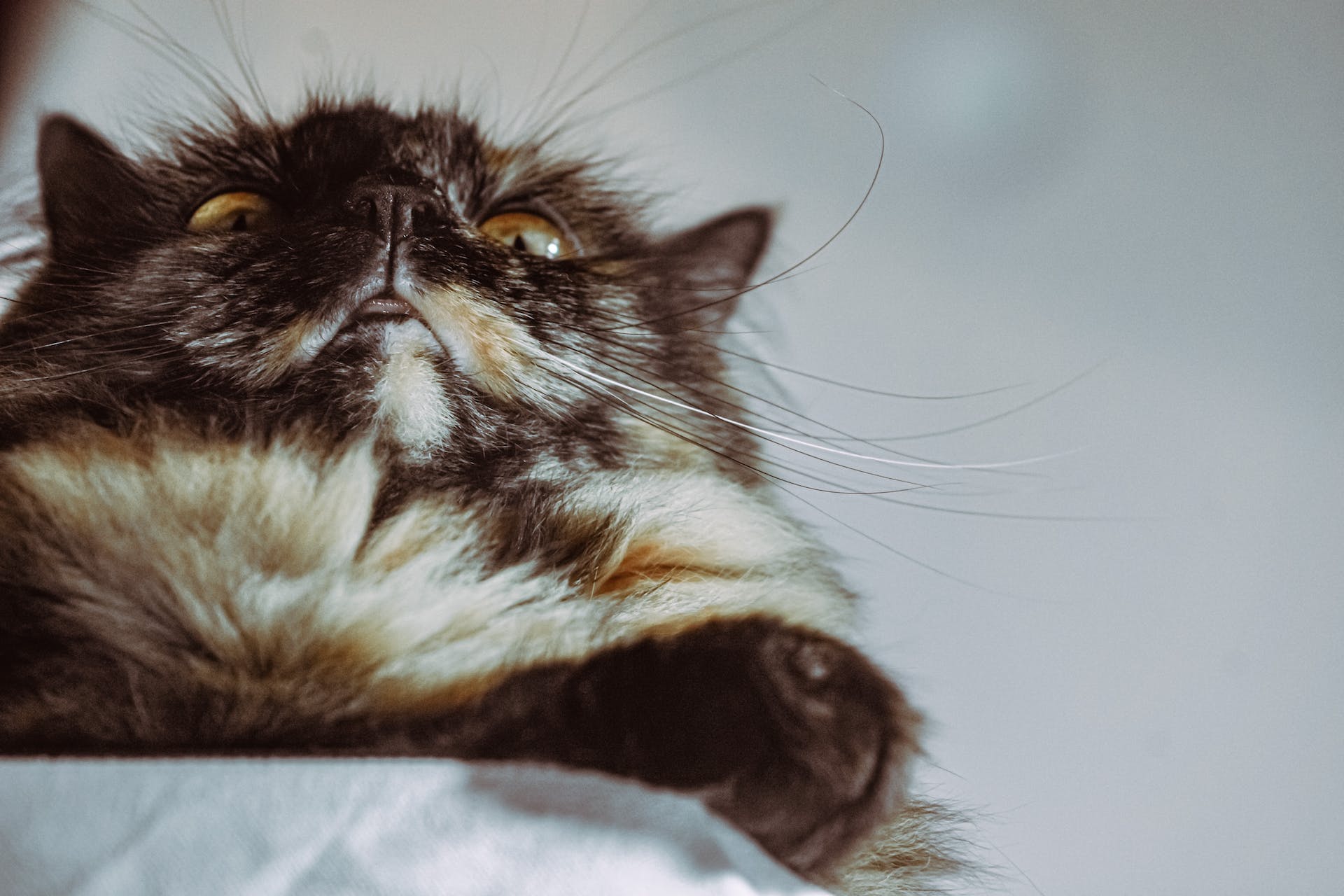
These sensitive antennas help cats be aware of the space around them and determine if they can fit through tight spaces. Whiskers can also detect the barely detectable changes of wind and enable cats to locate their prey easier. When meeting another cat, they can evaluate each other by touching whiskers without physical contact. Whiskers can also indicate a cat’s health, if they suddenly start to break off or fall out. Unexplained changes in their appearance could be a sign of stress, illness, or dietary deficiencies and should be the sign to take the cat to a veterinarian.
5. Can cat’s purring heal humans?
When a cat is happy and relaxed next to you, they tend to start purring. Cat purring is very soothing to hear and feel, and is said to have remarkable healing properties. It has been studied that purring vibrations are at a right frequency that promotes bone repair, aids in tissue healing and reduces stress. It’s a natural form of therapy for both you and your kitty. Today it is believed that cat purring helps with many things including:
- Reducing stress
- Managing pain
- Blood pressure regulation (to some degree)
- Wound healing (physical and mental boo boo)
- Emotional support
- Promotes bonding
Humans naturally calm down when there is a purring kitty on their lap. The frequency of the purring vibrations is within a range that can help lower stress levels, release endorphins that help with pain relief. The calming effect of cat purring may also contribute to regulating blood pressure, because it makes you relax. Some individuals with chronic pain or discomfort find comfort in the presence of a purring cat.
The bottom line is, cats are great at helping both our physical and mental pain. Even though cats are not a substitute for actual medical help, it’s no wonder we bond with them during these purring moments when they have such an effect on us!
6. Why did Ancient Egyptians value cats?
Cats were highly treated in ancient Egypt. They were associated with grace, protection, and goddesses like Bastet. The punishment for harming a cat in ancient Egypt was severe, showing their significant status in people’s lives back in the day. There were downsides too and here are some cool facts about why the ancient Egyptians worshipped cats:
- Pest control
- Religious reasons: Goddess Bastet
- Symbol of good fortune
- Household companion
- Spiritual connection
- An offering
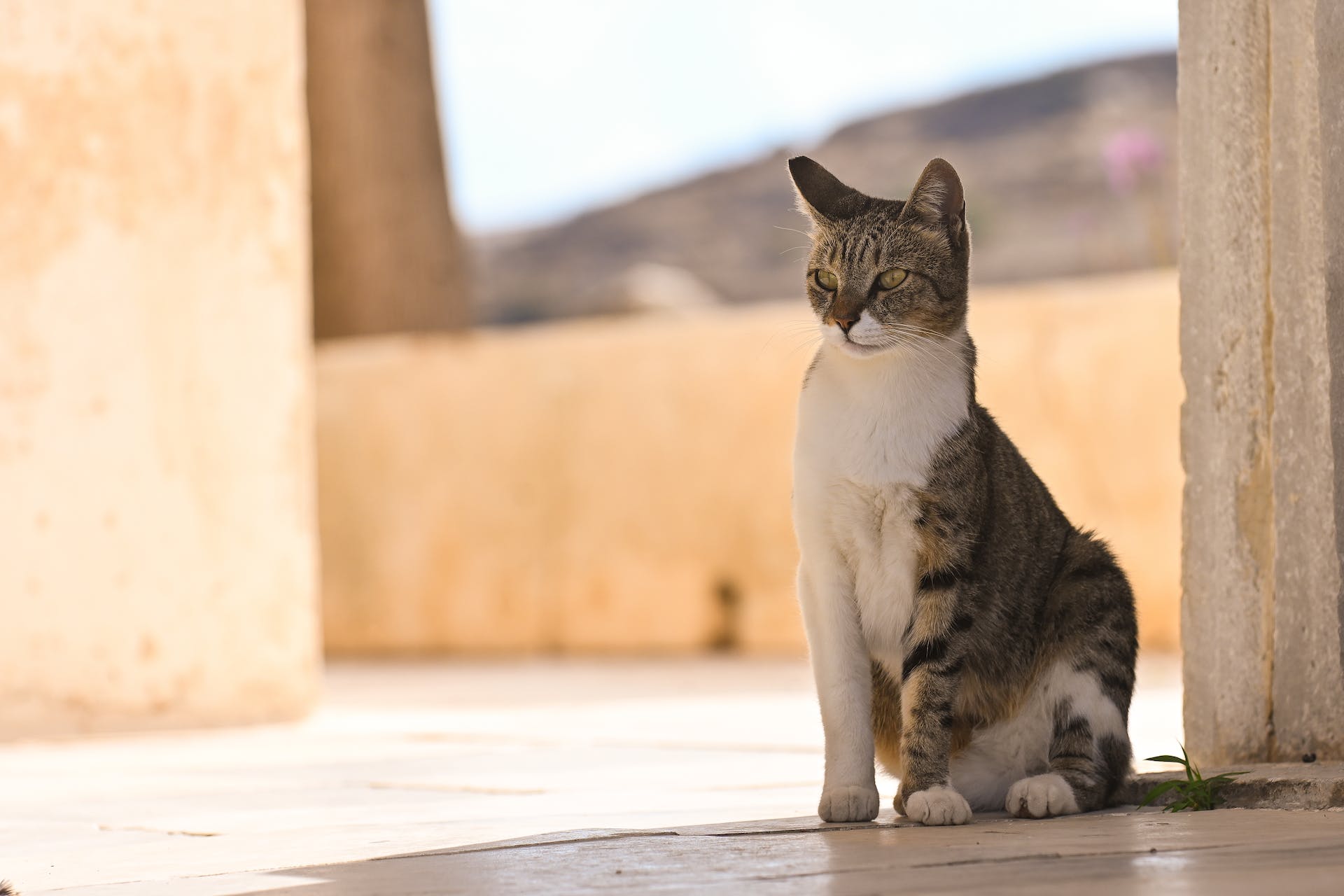 The major reason why Egyptians loved cats is because of what they do best: hunting mice and pests. They protected the grain from being spoiled by mice, preventing diseases from spreading. And in return they were valued, likely fed, and kept in their homes. After their death, cats were mummified the same as family members. Bastet (also spelled Bast) is a goddess that cats are linked to in ancient Egypt. She is a symbol of home, fertility, childbirth, and protector against evil spirits. Bastet was often depicted with the head of a lioness or a domestic cat, and her image was a symbol of maternal care and power.
The major reason why Egyptians loved cats is because of what they do best: hunting mice and pests. They protected the grain from being spoiled by mice, preventing diseases from spreading. And in return they were valued, likely fed, and kept in their homes. After their death, cats were mummified the same as family members. Bastet (also spelled Bast) is a goddess that cats are linked to in ancient Egypt. She is a symbol of home, fertility, childbirth, and protector against evil spirits. Bastet was often depicted with the head of a lioness or a domestic cat, and her image was a symbol of maternal care and power.
Cats were believed to possess spiritual and protective qualities. Their grace, agility, and ability to see in the dark were associated with divine attributes. Killing a cat, even accidentally, was considered a grave offense and could result in severe punishment. A less known fact is that orange cats were often a religious sacrifice to the goddesses Bastet and Isis.
In summary, ancient Egyptians valued cats for their practical contributions, symbolic importance, spiritual significance, and companionship. Their hunting abilities, mystical qualities, and loving nature made cats an integral part of ancient Egyptian culture, leaving a lasting legacy that continues to influence our perception of cats today.
7. Why do cats sleep so long?
Cats really love to catch on their Z’s. They live in energy conservation mode, sleeping an average of 12-16 per day. These sleep patterns are rooted in their primal hunting instincts, preserving energy for those sudden bursts of activity. You may think your cat is sick if it sleeps too long but that may not be the case. Several factors contribute to why cats sleep so long:
- Predatory instincts
- Energy conservation
- Crepuscular nature
- Growth and development
- Age and lifestyle
- Stress factors
Your cat is still wild at heart and follows the habits that evolved from thousands of years of hunting. They needed to constantly conserve their energy before using a lot of it in a short burst during a hunt. Cats don’t have a 9 to 5 so their schedule differs from ours. They tend to have their zoomies during the times when the mice and other prey is most active, which happens to be during dawn and twilight hours.
If your cat is still small, they sleep a lot because their body is growing and uses a lot of energy. For kittens sleeping is crucial for physical and mental growth, as well as building a strong immune system. And if your cat is aging, their sleep patterns might change. Older cats tend to sleep more, as do indoor cats who have fewer stimuli and activities to engage with.
Another factor is that a stressed cat may sleep longer because they feel threatened and unsafe in a new environment. Sleeping allows them to avoid potential danger and cope with stressful situations. So similar to humans!
It’s important to note that individual cats’ sleep patterns can vary. While some cats sleep more than others, sudden changes in sleep patterns could be due to health issues, so it’s essential to monitor your cat’s behavior and consult a veterinarian if you have concerns. To conclude, the cat needs to sleep a lot for their physical and mental health.
8. How do cats sweat?
Cats don’t sweat in the sense that we imagine. Humans get the heat out by perspiration, dogs do it by sticking out their tongue, cats do something else. They have built-in temperature regulators – their paws. These cute pads help cool them down in hot weather and prevent heat loss during colder periods.
Cat paw thermoregulation is a fascinating and essential adaptation that allows cats to maintain their body temperature and navigate various environments. Cats’ paws play a crucial role in regulating their temperature, especially in extreme weather conditions. Here’s how cat paw thermoregulation works:
- Blood Vessels and Paw Pads
- Insulation
- Positioning
- Sensory
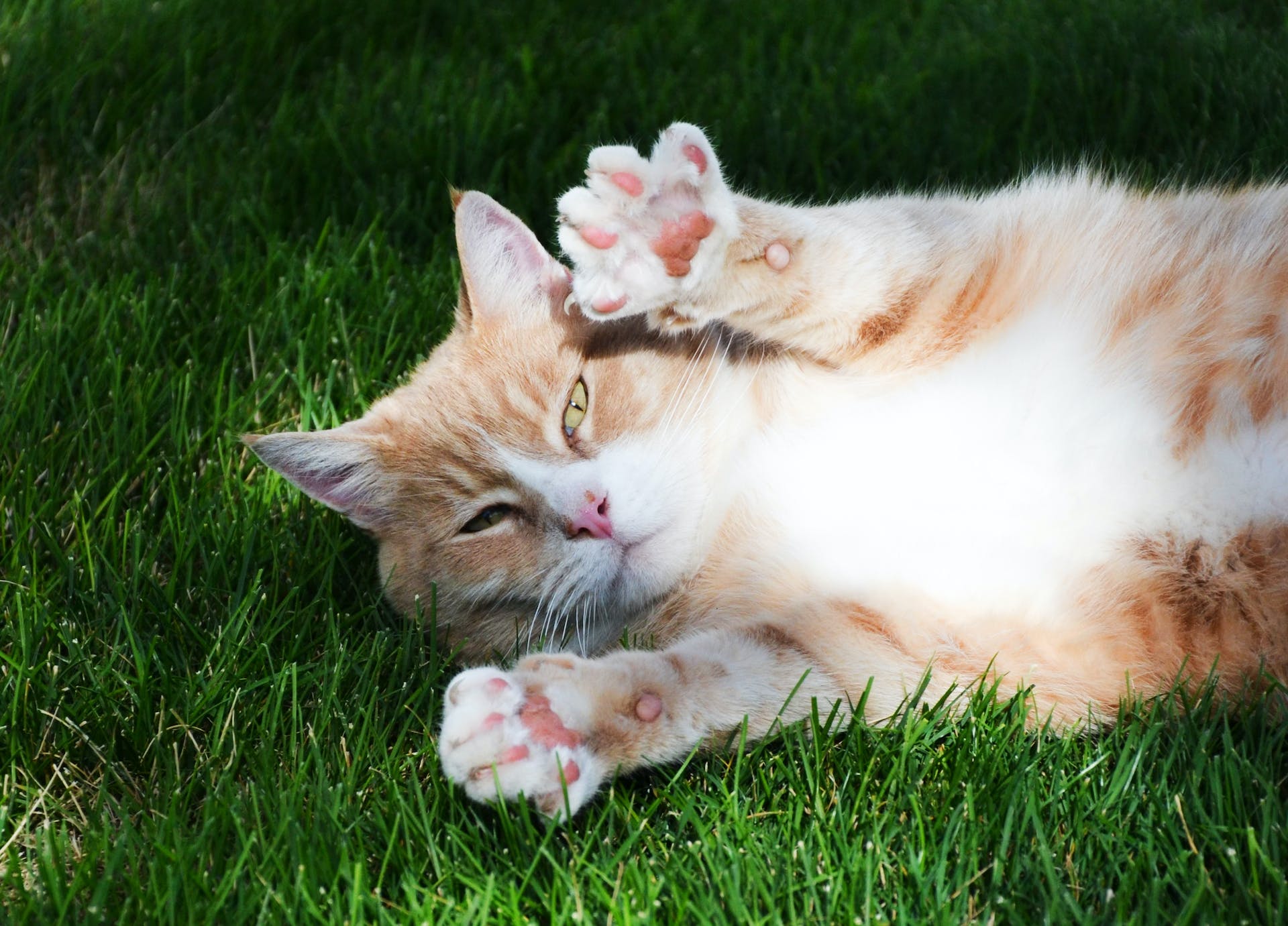
Their kitty paws are fantastically equipped with pads that act as insulation. They act as little cushions to protect them against the cold or hot surfaces. They help regulate the heat. Cats instinctively adjust their paw positioning to regulate temperature. In colder environments, you might notice your cat curling up and tucking their paws under their body to conserve warmth. In warmer conditions, they may spread their paws to dissipate heat and keep cool.
Cat paws also serve sensory functions. The pads are rich in nerve endings, allowing cats to gather information about their surroundings through touch. This sensitivity helps them assess the environment and make informed decisions.
To sum it up, cat paw thermoregulation is a remarkable adaptation that enables cats to thrive in any weather conditions. The blood vessels, fat pads, and behavior adjustments work together to ensure that a cat’s paws stay at a comfortable temperature, contributing to their overall ability to maintain body heat and engage in their daily activities. This ability allowed them to thrive all over the world.
9. How do you know if your cat loves you?
Cats have unique ways of expressing affection, and while they may not show love in the same way as humans or dogs, there are several signs that indicate your cat has a strong bond with you and cares for you. While these expressions may differ from the overt displays seen in dogs or humans, cats have a language of their own that reveals their deep attachment and love. Understanding these subtle yet big gestures can help strengthen the bond between you and your feline companion.
Cats communicate their emotions mostly through non-verbal signals. These signs, which show a cat’s affection and connection, offer a glimpse into how they feel about you as their human. If you look out for these signs, they can reassure you that your cat is happy to be around you.
- Purring
- Kneading
- Head-butting and rubbing against you
- Slow Blinking
- Following you around the house
- Bringing you gifts
- Being silly and playful
- Sleeping next to you
- Grooming
- Meowing
Purring, like mentioned before, is most often a sign of a content and relaxed cat. Rarely cats purr in distress, but there you need to look out for other signs. Kneading, a habit that many cats retain since kittenhood, when this behavior was a source of nourishment and security. When your cat kneads you, they are invoking a sense of warmth and trust from those early days.
Head butting and rubbing against you is a sign of affection, because your cat chooses to bless you with their unique scent. It says This human is mine and I accept them. The slow blink, an exchange between both cats and humans, is a gesture of complete trust. If they follow you from room to room this means they want your company and are curious about what you are up to.
If cats bring you “gifts”, a toy or a captured prey (if they are outdoor adventurers), it shows that they don’t want you to starve and care about you.
In the complex world of cat feelings, these subtle actions show how much your cat cares. When you notice and react to these signs, you’re building a strong connection that goes beyond words. Remember, every cat is different, and their ways of showing love can be unique. Understanding and embracing their affectionate gestures help you feel even closer to your furry friend and appreciate the special relationship you have.
10. Why do cats need claws?
Do not ever, under any circumstance even think to declaw your cat. Cat claws aren’t simply their nails, they are also their “fingers”. They are essential tools that serve various critical functions in a cat’s life. They enable cats to navigate their world, communicate, and fulfill their natural instincts, making them an integral part of a cat’s physical wellbeing.
From hunting and climbing to grooming and communication, cats’ claws play a significant role in their daily activities. Cats that have been declawed experience signs of depression and limited mobility as they struggle to move around without them. Declawing alters the cat’s behavior and forces them to live with a disability, similarly if human toes would be removed. Understanding the importance of claws sheds light on why these retractable mini knives are indispensable for a cat’s survival and overall quality of life.
Why claws are important:
- Hunting and self-defense
- Climbing and exploration
- Marking territory (scratching)
- Grooming and hygiene
- Communication
- Claw Maintenance
- Escaping
- Play and Interaction
Cats’ claws are vital for hunting and self-defense, enabling them to catch prey and protect themselves from potential dangers. Their sharp claws provide a firm grip on surfaces, letting them climb trees and explore the world. As territorial creatures, cats use their claws to mark their territory, leaving visible and scent-based cues for other cats. This unique behavior helps establish their presence and communicate with their feline counterparts.
Grooming and hygiene are integral to a cat’s well-being, and their claws play a role in this ritual. Cats use their claws to meticulously clean and maintain their fur, ensuring it stays clean and free of debris. Scratching serves as a form of exercise, allowing cats to stretch and engage their muscles. The act of scratching communicates messages to other cats and humans that this is the cat’s territory. Regular claw maintenance through scratching keeps them sharp and ready for various tasks.
To summarize, a cats’ claws are essential tools that facilitate hunting, climbing, communication, grooming, and more. These retractable razors are key to a cat’s survival, comfort, and expression of natural behaviors. Recognizing the significance of claws helps us appreciate the incredible adaptability of cats and shows us why these tools are a crucial part of their existence.
Cats will continue to surprise and amaze us with their lovely behaviors and unique traits. These 10 lesser-known facts have shed light on the hidden world of our feline companions, showing how we can connect with our feline friends. Whether through a shared slow blink or by the tail language, understanding these mysteries adds to the joy of being a cat parent. Embrace the charm and wonder of your cat’s world, and let these revelations strengthen the bond you share with your whiskered friend.
